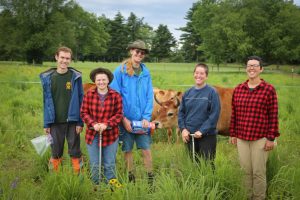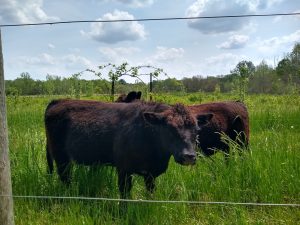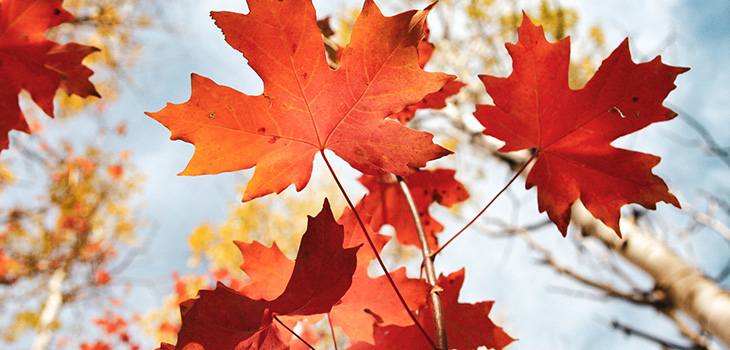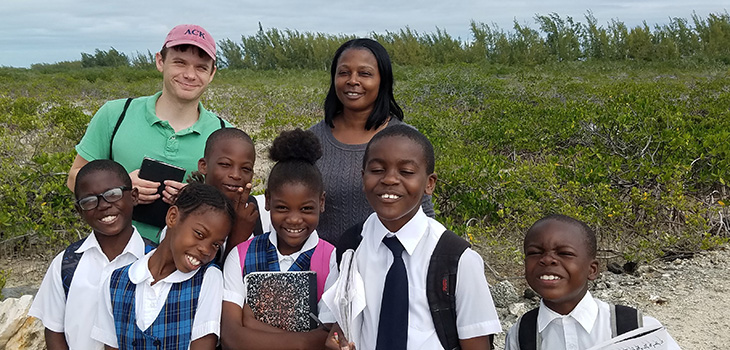Cattle Grazing and Prairie Burning
Hickory Scholars:
Skylar Antonides – Individual Project: Arbuscular Mycorrhiza Fungi (AMF)
Goshen College ’23
Major: Environmental Science
Alex Neufeld
Goshen College ’24
Major: Biology
Madison Sorg – Individual Project: Insect Communities
Goshen College ’22
Major: Environmental Science
Janell Stoltzfus
Goshen College ’23
Major: Environmental Science
Josie Strader – Individual Project: Carbon Sequestration in Soil
Goshen College ’22
Major: Environmental Science
WHAT IS THE RESEARCH?
 Professors Jonathon Schramm, Ryan Sensenig, and John Mischler and undergraduate students are conducting research over several years that compares the impacts of different prairie management practices: burning and grazing. They are assessing the potential for sustainably grazing domestic livestock on native prairie plants and the effects of burning on the ecosystem.
Professors Jonathon Schramm, Ryan Sensenig, and John Mischler and undergraduate students are conducting research over several years that compares the impacts of different prairie management practices: burning and grazing. They are assessing the potential for sustainably grazing domestic livestock on native prairie plants and the effects of burning on the ecosystem.
Burning occurs in spring and beef cattle graze on prairie grasses in Merry Lea’s West Goodrich Prairie and Woody Perennial Polyculture, and at Professor Sensenig’s Little Bluestem farm each summer. Prairies at Merry Lea and Little Bluestem are separated into different plots to compare management practices: either burned or grazed, both burned and grazed, or not at all.
Every summer, students conduct plant surveys and collect soil cores in each section. Their goal is to see how plant communities have changed over time and record data, such as the number of plants, types of species, plants’ height, how many are flowering, how many have been herbivorized (leaves and stems eaten by animals) and the percent cover of each species in each plot. Soil cores provide data including density, grain size analysis and soil type identification.
SOME STUDENTS CONDUCTED INDIVIDUAL PROJECTS IN CONJUNCTION WITH THIS RESEARCH PROJECT:
Skylar Antonides – Arbuscular Mycorrhiza Fungi (AMF)
AMF is a type of fungi that creates an interconnected network between plants, nutrients and fungi in the soil. AMF supports plant growth by forming into the roots of plants. Plants can use AMF as conduits to send nutrients to each other. AMF can also gather nutrients themselves to exchange with plants and take carbon from the plant. Skylar is interested in the conditions surrounding AMF development: how much AMF colonizes a plant’s roots and if grazing and fire affect how much AMF a plant has. He also hopes to assess if AMF correlates with the amount of carbon stored in the soil.
Madison Sorg – Insect Communities
Madison investigated how burning and grazing treatments in the Goodrich and Little Bluestem prairies alter the overall insect communities, including pollinators. She specifically sought to understand insect reactions to these disturbances, which are vital in a prairie.
Josie Strader – Carbon Sequestration in Soil
Josie took soil samples from non-prairie areas adjacent to Goodrich and Little Bluestem prairies to compare amounts of carbon, nitrogen and organic matter. She took samples from agricultural fields and mown strips of cool season grasses, to compare with the prairie plots on how much carbon each area sequesters or stores. To understand soil health, Josie calculated carbon-nitrogen ratios, since both elements are taken from the environment by plants and cycled for maintaining healthy ecosystems.
Carbon in the atmosphere is trapped and heats the earth; but it can be removed from the atmosphere (or “sequestered”) by plants and put into the soil. Carbon in the soil acts like a sponge, storing water and nutrients that plants and organisms need. Nitrogen is a nutrient that helps plants build tissue and cells.
HOW WILL THIS RESEARCH IMPACT MERRY LEA?
 Although Merry Lea already manages its prairies with fire, this study contributes data that outline the benefits of this type of management. Students help increase biodiversity at the Goodrich prairie through burning: many native prairie plants are fire-tolerant, and some species’ seeds are better dispersed by fire.
Although Merry Lea already manages its prairies with fire, this study contributes data that outline the benefits of this type of management. Students help increase biodiversity at the Goodrich prairie through burning: many native prairie plants are fire-tolerant, and some species’ seeds are better dispersed by fire.
“Historically, fire has been important to prairie development and continuation,” explained Josie. Prairies are a natural part of the Indiana landscape, and a prairie that is not burned or mowed will eventually become forest. Fires suppress trees, woody vegetation and invasive species that can compete with prairie plants.
On a small scale, Merry Lea is producing a very light agricultural footprint with this project and helps mitigate global warming. Cattle influence the health of the prairie and healthy prairies sequester carbon in the soil: carbon that otherwise would contribute to global warming.
The individual research that Skylar, Madison and Josie conducted have never been done before in relation to the prairie grazing and burning project. As such, they are laying the groundwork for future students to further understanding of what makes ecosystems healthy and how we can manage prairies for both human and non-human benefits.
“Knowing the directions of interactions- if benefits increase or decrease- is important anytime you’re managing a piece of land,” said Skylar. Knowing how cattle grazing increases or decreases AMF or levels of nitrogen in the soil, can help explain any changes in plant diversity. “For thoughtful land managers, [this research] can be important to get a clear picture of ecosystem health and productivity,” whether you’re managing it as a farmer or for aesthetics.
WHAT DO YOU HOPE TO DO WITH THIS RESEARCH?
Part of this study assesses which plants the cows prefer to eat, which not only has implications for plant diversity, but could also help inform farmers which plants to grow if they choose to model this system.
“I hope it encourages people in rural areas to install prairie restorations and know that it’s not exclusive to raising cattle,” said Josie. Prairies have higher levels of carbon and nitrogen in the soil because their roots are much denser, deeper and thicker than cool season grasses or crops in tilled fields. Tilling also breaks up AMF and the connections it makes between plants within the soil.
As people visit prairies and Merry Lea, “I hope people see it’s a beautiful ecosystem, and it creates a bigger interest in planting native plants in their backyards,” said Janell.



